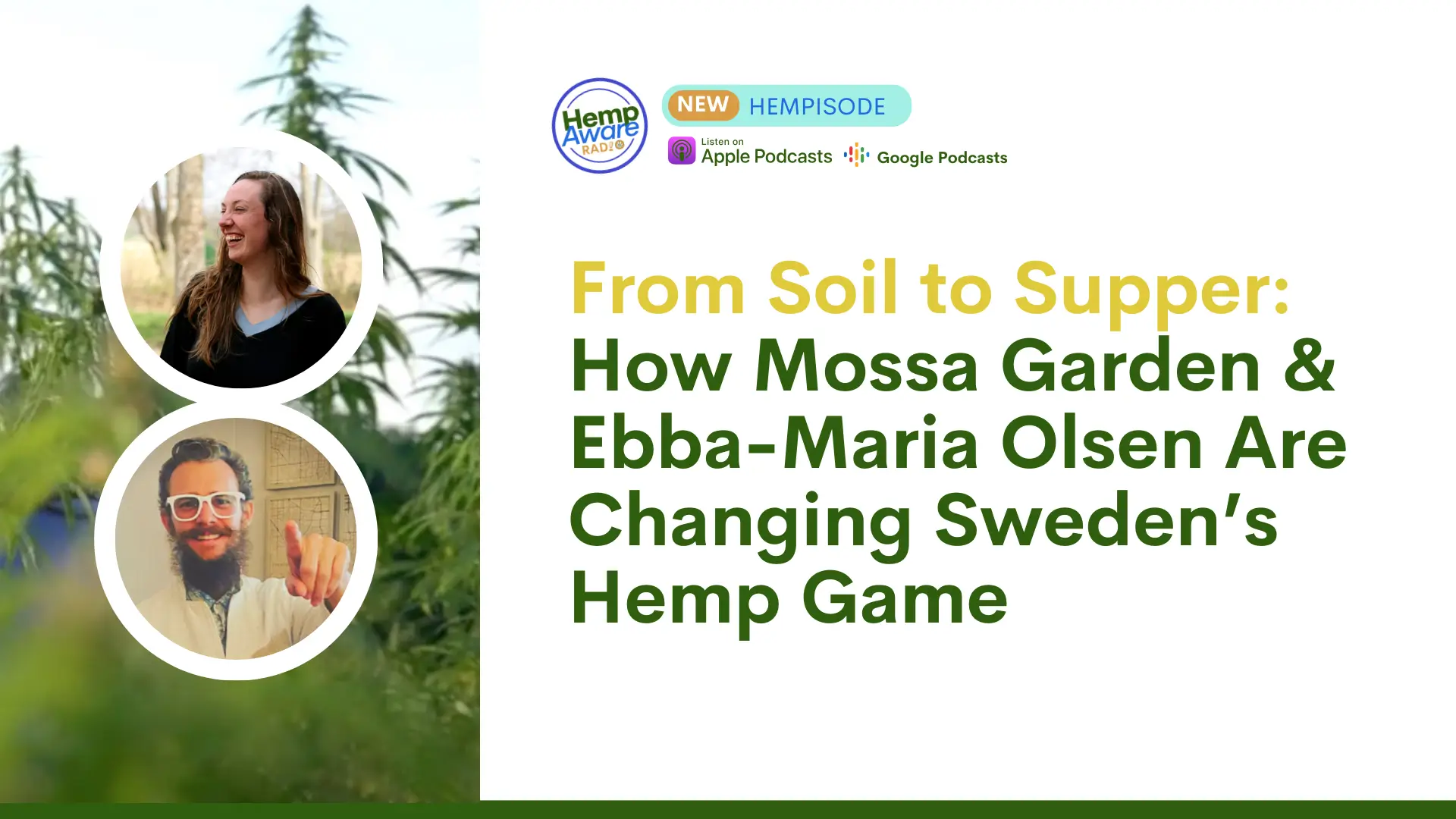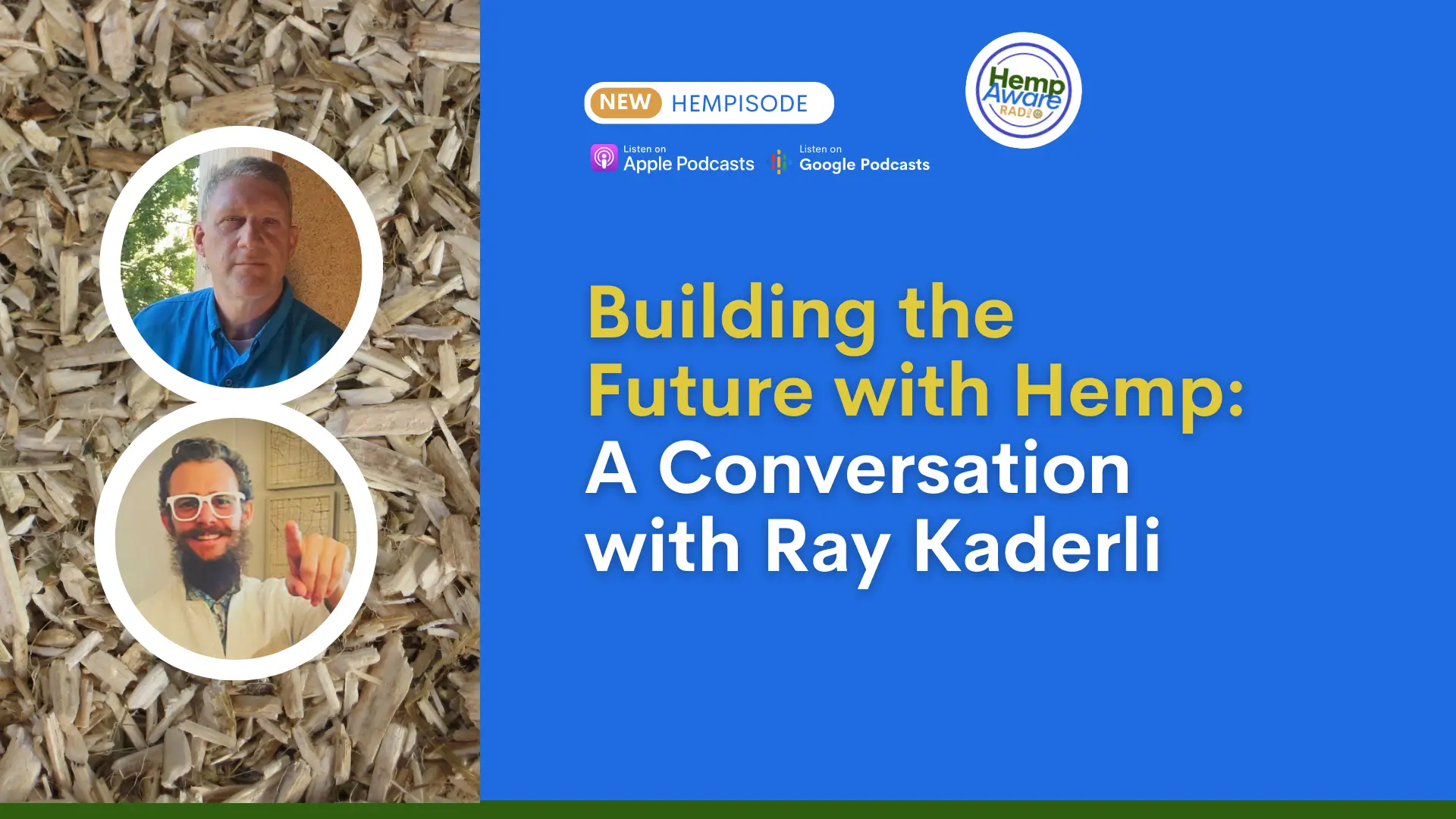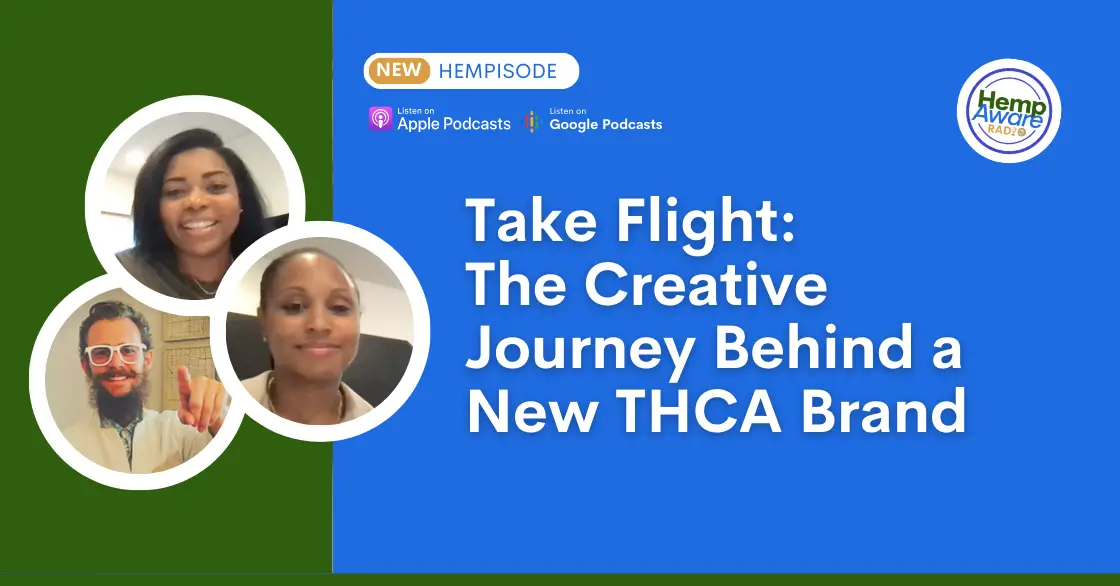When I stumbled upon Victor Kolbe’s captivating mini-documentary, “Fibers, the Roots of Industrial Hemp,” it felt like opening a door to a plant hiding in plain sight.
Much like my own journey into sustainable living, Victor’s story involves deep exploration and a revolutionary embrace of hemp as a solution to many environmental issues.
Join me as we dive into the history, challenges, and remarkable benefits of industrial hemp, highlighting the enlightening conversation I had with its passionate advocate, Victor Kolbe.
TL;DR: Hemp offers sustainable solutions that can counteract environmental degradation.
Its versatility benefits various industries from textiles to construction. It’s time for consumers to advocate for hemp and encourage policymakers to embrace its potential.
The Roots of Industrial Hemp
Industrial hemp has a fascinating history that’s often overlooked.
Once upon a time, it was a critical resource for clothing and textiles.
In the 1920s, eighty percent of clothing was made from hemp in the U.S.
But how did we get to the point where we often forget about this versatile plant?
Let’s dive into the roots of industrial hemp.
Overview of Industrial Hemp’s History
Hemp was not just a trend; it was a staple.
Until the mid-20th century, it was the fabric of choice for many Americans.
However, the introduction of the Marijuana Tax Stamp Act of 1935 stunted its growth in the U.S.
Punitive regulations that complexified hemp production led to its decline.
So, what changed? The rise of synthetic fibers, particularly nylon, began to overshadow hemp.
The 🌍 world moved towards convenience and cost-effectiveness, but at what cost?
Comparison between Hemp, Cotton, and Synthetic Fibers
When we compare hemp to cotton, it’s like comparing apples to oranges.
Cotton is often touted as a natural fiber, yet it comes with a hefty environmental price tag.
Did you know that cotton accounts for a whopping 16% of the world’s pesticides?
In contrast, hemp requires far fewer resources for cultivation. It thrives without harmful pesticides and less water, making it a cleaner choice for the environment.
- Hemp: Low environmental impact; requires minimal pesticides and water.
- Cotton: High pesticide use and resource-intensive.
- Synthetic Fibers: Derived from petroleum; not biodegradable and contribute to pollution.
That leaves us wondering: why has hemp been sidelined when it clearly has so many benefits? Perhaps it’s time we rethink our choices and revive this sustainable alternative.
Historical Significance of Hemp in Textiles
So, what makes hemp significant historically?
To put it simply, it was the backbone of textile production for centuries.
Before the emergence of synthetics, hemp was all around us, providing durable, breathable fabric. Its fibers were used not only for clothing but also for sails, ropes, and even paper.
But as synthetic fibers gained popularity, society’s connection to hemp dwindled. It was lost in the frenzy of fast fashion and cheap materials.
Our historical perspective on hemp has been unfairly shaped.
We can thank the influential forces of the mid-20th century for planting seeds of doubt about hemp.
Today, it’s essential to reconnect with that history, to understand what was lost, and to consider hemp’s potential as we forge a sustainable future.
Table of Key Data
| Period | Context |
|---|---|
| 1920s | 80% of clothing made from hemp in the U.S. |
| 1930s | Decline in hemp use correlating with the rise of nylon. |
Reflecting upon these statistics, it’s clear that hemp was once a dominant player in textiles.
The shift towards synthetic materials is more than a mere change in fabric; it represents a shift in values and sustainability practices.
The Road Ahead
Modern society seems to be waking up to hemp’s advantages. Advocates are pushing for more awareness and education around hemp.
They are emphasizing that its use can revolutionize the fashion industry.
Shouldn’t we, as consumers, be aiming for materials that not only serve us but also protect our planet?
Everyone can play a part in making this change.
It’s vital to examine our choices. The environmental impact of what we wear goes beyond aesthetics.
By recreating our relationship with hemp, we can start moving towards a more sustainable fabric future.
So, let’s remember: hemp isn’t just beneficial; it’s essential. Now is the time to rediscover what was lost and embrace the possibilities of industrial hemp once again.
Current Applications and Misconceptions
Hemp has been in the limelight for its remarkable versatility, and thanks to the insights shared by Victor Kolbe, we are beginning to see the full spectrum of its potential.
In a recent dialogue, he highlighted how hemp can reshape our environmental footprint while providing ethically sustainable options.
It’s exciting, isn’t it, to think about the possibilities?
Understanding Hemp’s Versatility
Victoria’s findings on hemp’s versatility emphasize that it’s not just a one-trick pony.
From textiles to construction materials, hemp offers solutions that are both practical and eco-friendly. Why is it that we often overlook this resource?
Traditional materials bombard our environment with pesticide and water usage, while hemp grows quickly, requiring minimal resources.
- Hemp’s fast growth: It matures in just two months!
- Environmental impact: It consumes significantly less water compared to traditional crops like cotton.
- Minimal pesticides: Hemp doesn’t need the same toxic treatments as cotton.
To illustrate the strength of hemp as an alternative, it’s worth noting: “Hemp can be used for construction or textiles; it’s an incredibly environmental option.”
This makes it a prime candidate as we forge ahead in an era where sustainability is key.
Addressing Misconceptions about Hemp and THC
Despite its benefits, misconceptions about hemp linger, often overshadowed by its association with THC. Many people still confuse industrial hemp with marijuana.
This confusion affects how we view hemp’s potential.
Victor noted that focusing on hemp’s industrial applications can help pivot conversations away from cannabis stigma.
Isn’t it odd that we’re so quick to jump to conclusions? Education is crucial here.
As Victor highlights, there’s an urgent need to disconnect the narrative from recreational THC use.
Instead, we should be promoting the *practical applications* of hemp.
We must educate ourselves about its potential to transform various industries, creating a healthier planet in the process.
Insights on Hemp in Construction and Textiles
The textile and construction industries provide fertile ground for hemp’s innovative uses.
In Victor’s mini-documentary, he dives deep into these applications, showcasing hemp as a building block for *eco-friendly construction*. It turns out that hemp-based materials can enhance structural sustainability without compromising strength.
Moreover, the use of hemp in textiles provides a sustainable alternative to cotton’s pesticide-heavy cultivation.
Did you know that cotton accounts for a staggering 16% of the world’s pesticide use?
By shifting to hemp, we can drastically reduce this impact, allowing nature to reclaim its balance.
| Aspect | Hemp | Cotton |
|---|---|---|
| Growth Time | 2 – 3 months | ~5-6 months |
| Water Usage | Minimal | High |
| Pesticide Use | None | 16% of world’s pesticides |
Visual Data Representations
To further clarify the differences in water usage and growth time, let’s take a look at this chart. It represents how quickly hemp grows and how much water it requires.
This is crucial data as we consider our future consumer choices. [Insert Chart – Hemp Growth vs. Water Usage] *Note: Chart details will depend on your data visualization tools.*
As we navigate the complex landscape of sustainable options, it’s essential to leverage the transformative power of hemp.
By shedding light on its versatile applications and clearing up common misconceptions, we can steer conversations in a more constructive direction.
Obstacles and Opportunities
Introduction to Hemp Regulations
Hemp, once a staple crop, now finds itself tangled in a web of regulations.
Many farmers face significant challenges due to these rules.
Why is that?
Tighter regulations have made it difficult for hemp to regain its footing in modern agriculture.
This is particularly concerning, as hemp has incredible potential for sustainability.
Historical Context
To understand today’s hurdles, we need to dive into the past.
For decades, hemp was pushed into the shadows, primarily due to lobbying from chemical companies.
As Victor Kolbe noted,
“Backdoor negotiations led to a decline in hemp production for WWII materials.”
This manipulation created a stigma around hemp, linking it to cannabis in people’s minds.
Notably, in the 1920s, a staggering 80% of clothing in the U.S. was made from hemp.
The Marijuana Tax Stamp Act of 1935 changed everything, leading to the decline of hemp’s prominence.
Regulatory Challenges
- Accessibility: The current regulations limit farmers’ ability to cultivate hemp.
- Market Confusion: Farmers face challenges due to inconsistent policies across states.
- Financial Burden: Compliance with regulations can be costly for smaller farmers.
These challenges create a convoluted market, sparking more questions than answers. How can we restore hemp’s place in agriculture when the regulations seem stacked against it?
Opportunities in the Green Economy
Despite the obstacles, the green economy shines a light on opportunities.
Hemp is versatile. It can be used in construction materials, textiles, and biodegradable plastics, among others. As a crop, it requires minimal resources—think low water usage and no reliance on pesticides.
This makes it an attractive alternative to conventional crops like cotton, which guzzle water and harmful chemicals.
With the recent changes in legislation regarding hemp farming after 2018, we see a shift in perception. These laws have paved the way for more farmers to enter the hemp market.
This is encouraging. It indicates that society is beginning to recognize hemp’s potential as environmentally friendly.
Data Insights: Hemp Production Over the Years
To further illustrate the changes, the following chart shows the percentage of farmland dedicated to hemp production in recent years and highlights the legislative changes regarding hemp farming post-2018.
This can help us visualize how rapidly the landscape of hemp farming is evolving.
| Year | Percentage of Farmland Dedicated to Hemp | Legislative Change |
|---|---|---|
| 2017 | 0.5% | State laws still restrictive |
| 2018 | 3% | Farm Bill passed, legalizing hemp |
| 2020 | 6% | Increased state licenses issued |
| 2022 | 15% | Growth in market demand |
Conclusion of Highlights
In summary, the challenges and opportunities in the hemp industry are tightly interwoven.
While historical context shows us the struggles, recent changes in regulations and the rise of the green economy offer hope for a brighter future. How can we amplify these efforts?
By sharing knowledge, advocating for better policies, and supporting sustainable practices, we can pave the way for hemp to reclaim its rightful place in agriculture.
As we move forward, let’s stay engaged and informed.
The path to widespread hemp adoption may be fraught with challenges, yet the potential rewards for the environment and local economies are undeniable.
The Fast Fashion Connection
In our quest to understand fashion, we often overlook its darker side: the environmental impact.
Let’s dig deeper into the connection between the fast fashion industry and sustainability.
It’s a tale of excess, waste, and the potential for change.
Did you know that every year, the fast fashion industry generates an astonishing amount of waste?
The statistics are alarming.
Understanding Fast Fashion’s Environmental Footprint
Fast fashion thrives on trends that change almost overnight.
This results in clothing that’s worn a few times, then discarded.
According to recent studies, the fast fashion industry accounts for over 92 million tons of waste annually. That’s like filling one garbage truck every second. What can we do to mitigate this?
- Choose quality over quantity.
- Support sustainable fashion brands.
- Educate ourselves and others about our consumption habits.
Fast fashion relies heavily on pesticides and cheap labor.
For instance, cotton, the main fabric in many trendy garments, consumes 16% of the world’s pesticides.
That’s not a small number! In contrast, hemp requires minimal resources to grow.
Isn’t it time we examined the choices we make when we shop?
Hemp as a Sustainable Alternative
Let’s explore the green alternative: hemp.
Industrial hemp is a remarkable plant that flourishes without harmful pesticides.
In fact, it requires significantly less water than cotton.
As Victor Kolbe eloquently stated, “
Education is foundational in addressing fast fashion’s consequences.
Consider this: hemp can produce more fibers per acre than cotton while enriching the soil and preventing soil erosion.
It’s a win-win! Many still view hemp through the lens of cannabis stigma, but its true potential lies in sustainable applications.
Comparative Analysis: Hemp vs. Cotton
When comparing hemp and cotton, the differences become clear:
| Factor | Cotton | Hemp |
|---|---|---|
| Water Usage | High | Low |
| Pesticides | 16% of global pesticides | None |
| Soil Health | Poor | Enriches soil |
Aren’t these benefits significant? It’s clear that by choosing hemp over cotton, we can make a considerable impact on the environment.
Education and Awareness in Consumer Choices
We all play a role in this.
The more we educate ourselves about the fabrics we wear, the more informed our choices become.
It’s not just about us as individuals but also about a collective change in consumer behavior.
I often ask myself, “What am I supporting with my purchases?”
When we opt for sustainable materials, we protest against the fast fashion cycle of waste and exploitation.
Education is essential, as many people still aren’t aware of the harmful effects of fast fashion. By spreading knowledge, we can encourage responsible choice making.
More and more brands are embracing sustainability.
Awareness is rising. But we need to do more.
Let’s not forget about the urgent issues surrounding health and safety.
Some eco-friendly materials like bamboo undergo toxic processes that can negate their benefits. In this landscape, hemp stands out as a clean, viable alternative.
Let’s all strive for a better, greener future. The fashion industry is changing, but we can speed up that change by choosing materials wisely. Together, we can carve a path toward a more sustainable future in fashion.
The Vision for a Hemp-Driven Future
Imagine a world where our clothing, homes, and even our daily products stem from a renewable resource that enriches the planet rather than depletes it.
This is the vision for a hemp-driven future.
Hemp is not just a crop; it’s a pathway to sustainability.
How Hemp Contributes to Global Sustainability Goals
Hemp is like a superhero in the agricultural world. It grows quickly, requiring far less water than its cotton counterpart. Did you know it can grow in diverse climates and soil types?
And it does this with virtually no pesticides. While cotton consumes about 16% of the world’s pesticides, hemp is free from this burden. This makes it a game-changer in the quest for a more sustainable future.
As mentioned by Victor Kolbe, a passionate advocate for industrial hemp, “If we keep at it, in ten years, cotton won’t even be there.” This statement captures the hope surrounding hemp.
- Hemp restores soil health.
- It absorbs CO2, aiding in climate change mitigation.
- It can replace petroleum-based products, reducing our carbon footprint.
By switching to hemp, we can align with global sustainability goals, improve agricultural practices, and help our planet revive.
Potential for Hemp in Various Industries
The versatility of hemp is astonishing. It isn’t just a source for fabric.
Its applications touch numerous industries:
- Textiles: Hemp fabric is strong, biodegradable, and breathable.
- Construction: Hemp can be used to create sustainable building materials like hempcrete.
- Bioplastics: Hemp fibers are used to produce eco-friendly plastics, reducing dependency on oil.
- Biofuels: Hemp seeds can help create biodiesel and ethanol, offering cleaner energy alternatives.
This variety makes hemp a comprehensive solution for sustainability and a significant player in various markets. By shifting our focus to hemp, we can revitalize industries while being kind to the environment.
A Call to Action for Consumers and Policymakers
Now, here’s where we all come in. Consumers play a pivotal role in this shift. When we choose hemp products over their less sustainable alternatives, we send a clear message to manufacturers. Policy changes by lawmakers can further boost hemp-related practices.
They must be encouraged to design policies reversing the stigma surrounding hemp.
This allows American farmers to benefit from growing it and opens doors for innovative businesses.
Also, it’s crucial to educate ourselves and others.
Sharing knowledge about hemp and its sustainable benefits can shift public opinion. Imagine what could happen if every single one of us took action. We would create a domino effect of positive change.
The Future of Hemp is Bright
Victor’s belief in an industrial hemp future stems from a long history of this crop being overlooked.
In the 1920s, 80% of clothing in America was made from hemp.
Today, we are at a crossroads where innovation meets sustainability.
We can reconnect with this past and build a brighter future.
As we forge ahead, the data supports a rosy outlook for hemp.
Experts project considerable market growth within the next decade, as global trends lean towards sustainable materials. It’s not just naive hope; it’s backed by numbers.
“If we keep at it, in ten years, cotton won’t even be there.”
Will we seize this moment to invest in our planet’s future?
The answer lies in education, advocacy, and conscious choices.







